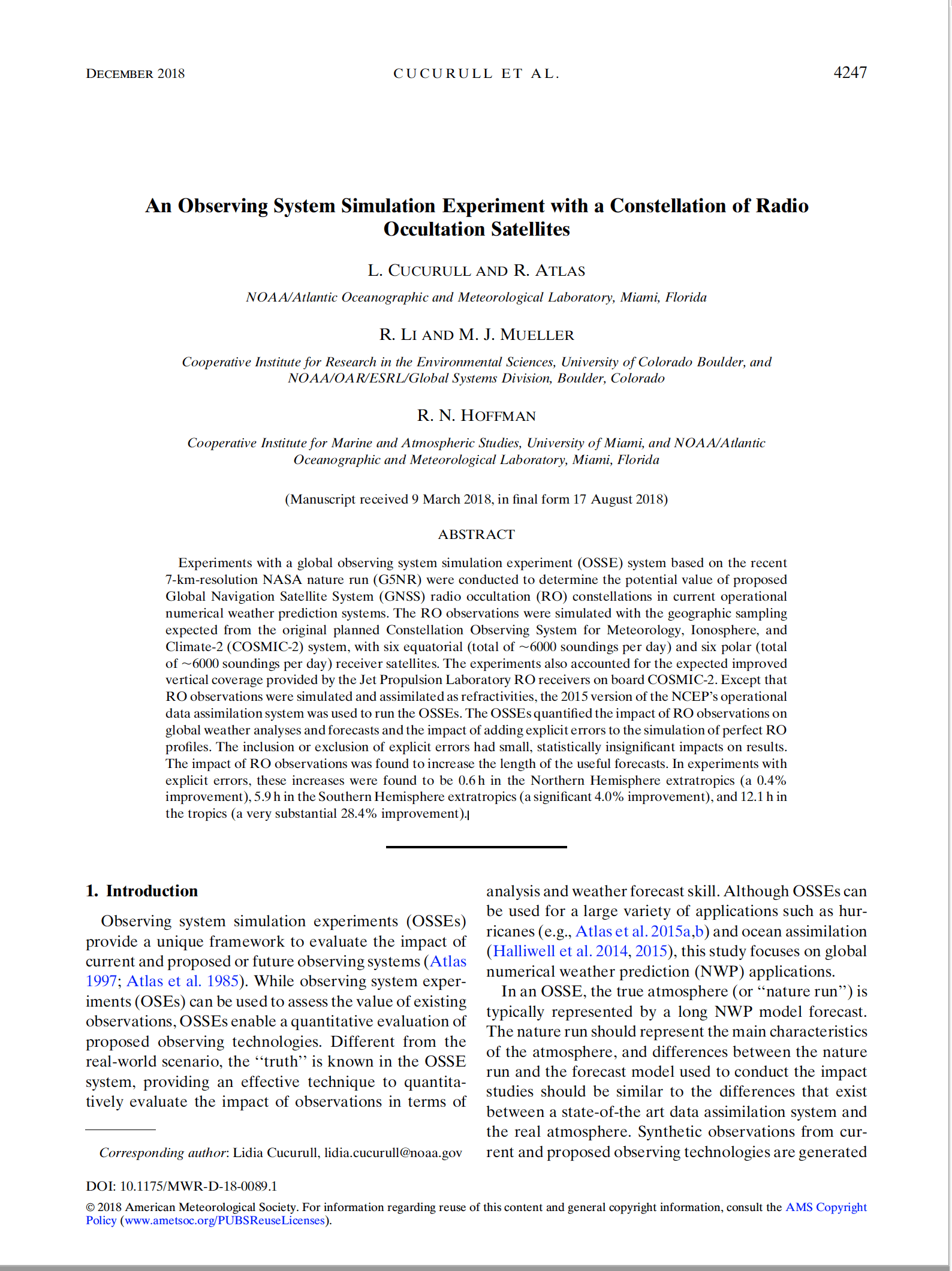Cucurull, L., Atlas, R., Li, R., Mueller, M. J., & Hoffman, R. N. (2018). An Observing System Simulation Experiment with a Constellation of Radio Occultation Satellites. Monthly Weather Review, 146(12), 4247-4259.
Abstract:
Experiments with a global observing system simulation experiment (OSSE) system based on the recent 7-km-resolution NASA nature run (G5NR) were conducted to determine the potential value of proposed Global Navigation Satellite System (GNSS) radio occultation (RO) constellations in current operational numerical weather prediction systems. The RO observations were simulated with the geographic sampling expected from the original planned Constellation Observing System for Meteorology, Ionosphere, and Climate-2 (COSMIC-2) system, with six equatorial (total of ;6000 soundings per day) and six polar (total of 6000 soundings per day) receiver satellites. The experiments also accounted for the expected improved vertical coverage provided by the Jet Propulsion Laboratory RO receivers on board COSMIC-2. Except that RO observations were simulated and assimilated as refractivities, the 2015 version of the NCEP’s operational data assimilation system was used to run the OSSEs. The OSSEs quantified the impact of RO observations on global weather analyses and forecasts and the impact of adding explicit errors to the simulation of perfectRO profiles. The inclusion or exclusion of explicit errors had small, statistically insignificant impacts on results. The impact of RO observations was found to increase the length of the useful forecasts. In experiments with explicit errors, these increases were found to be 0.6 h in the Northern Hemisphere extratropics (a 0.4%improvement), 5.9 h in the Southern Hemisphere extratropics (a significant 4.0% improvement), and 12.1 h in the tropics (a very substantial 28.4% improvement).
